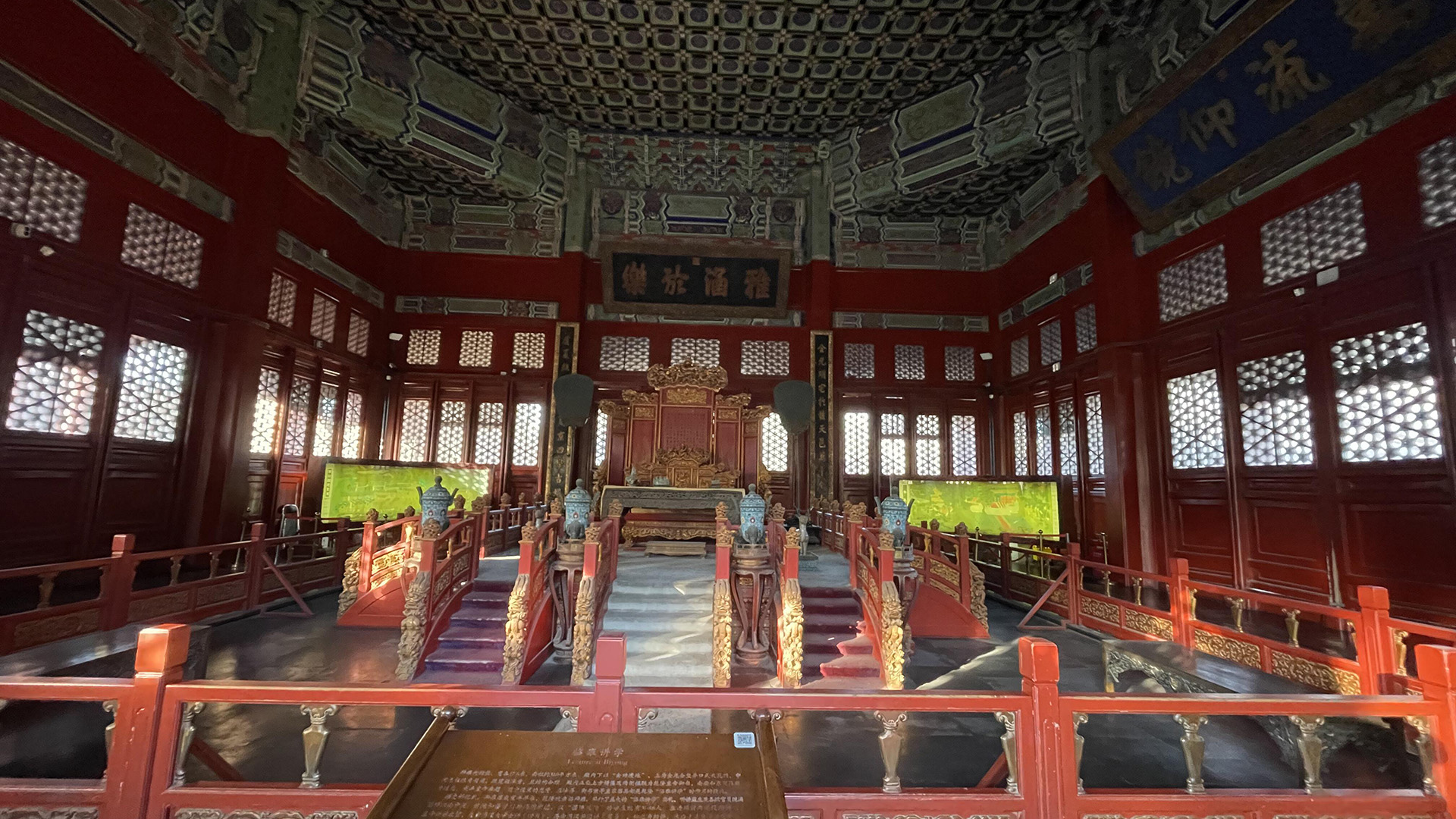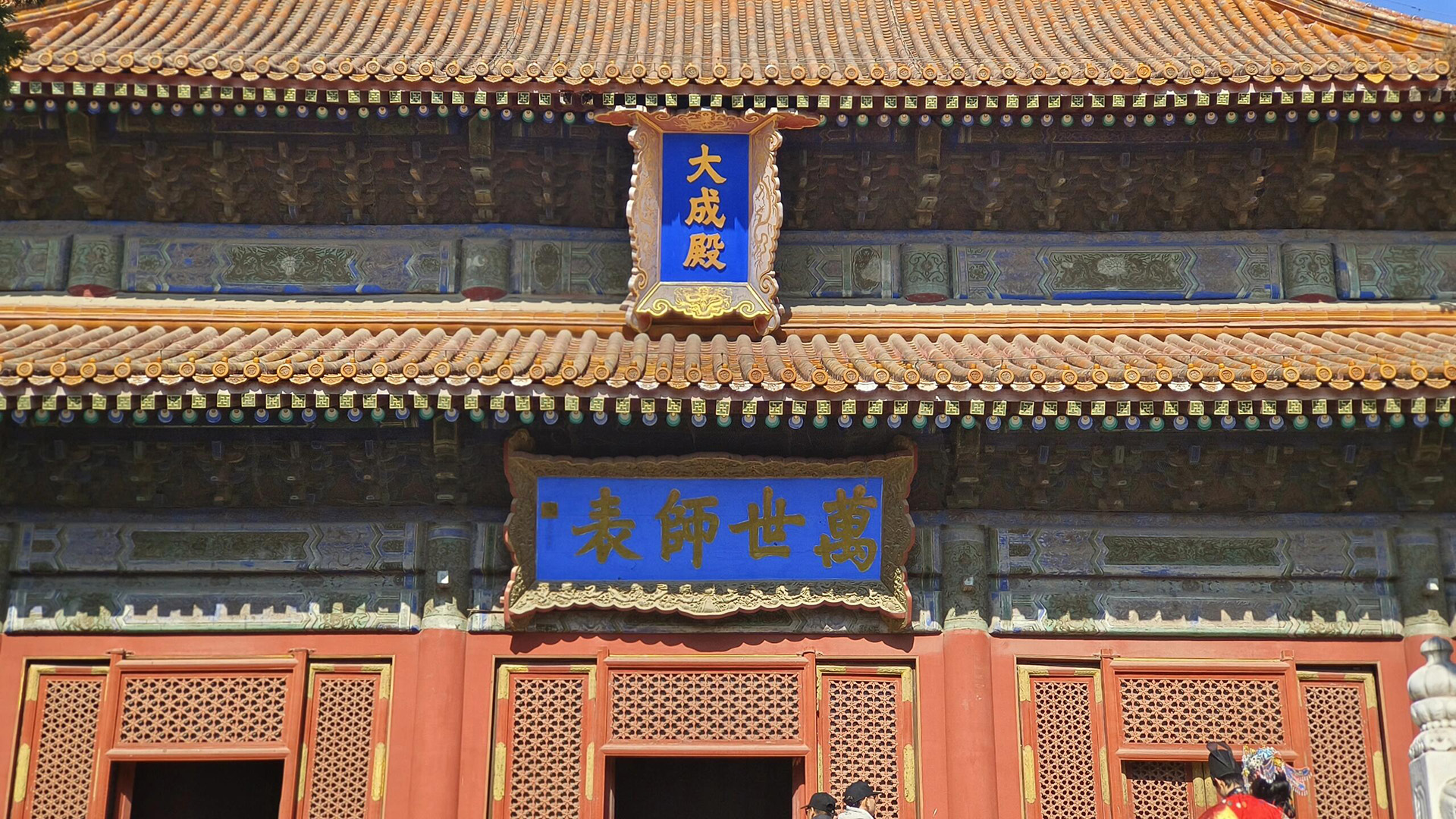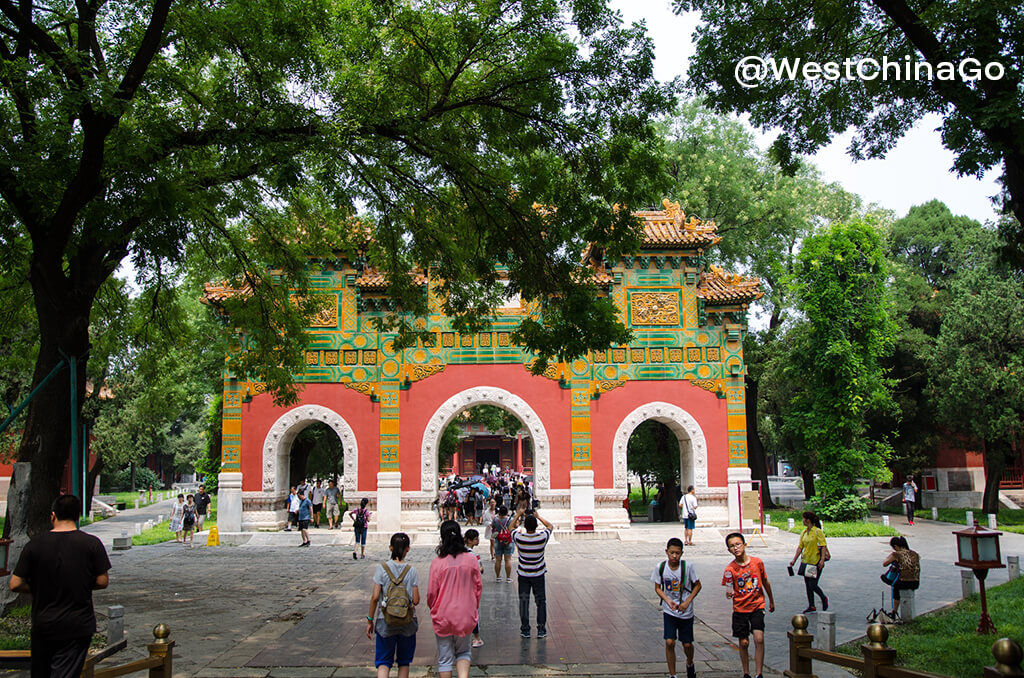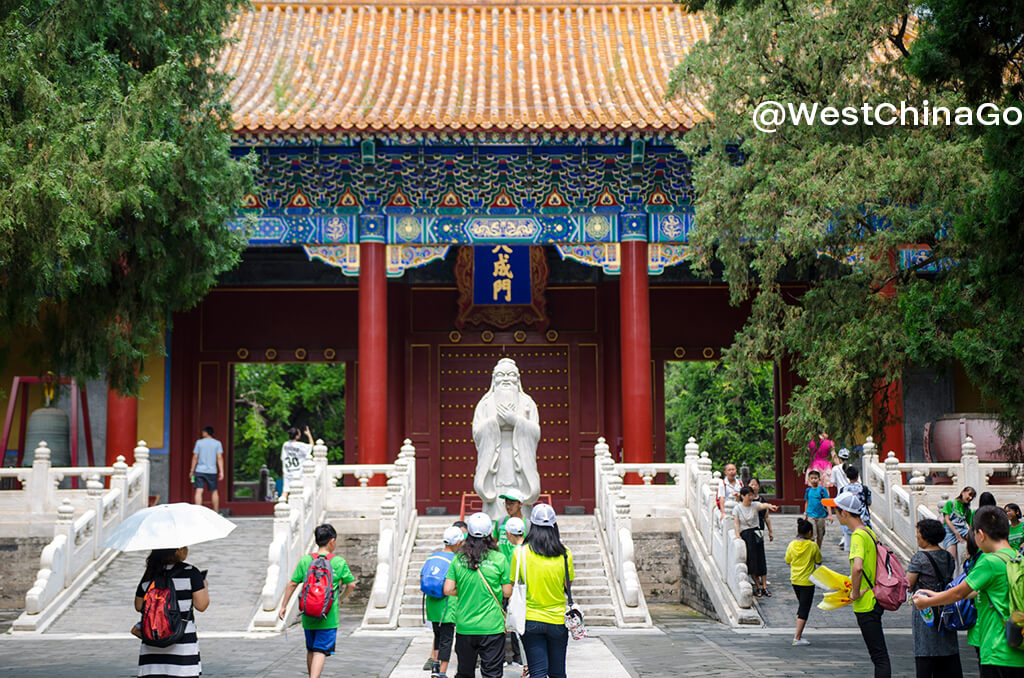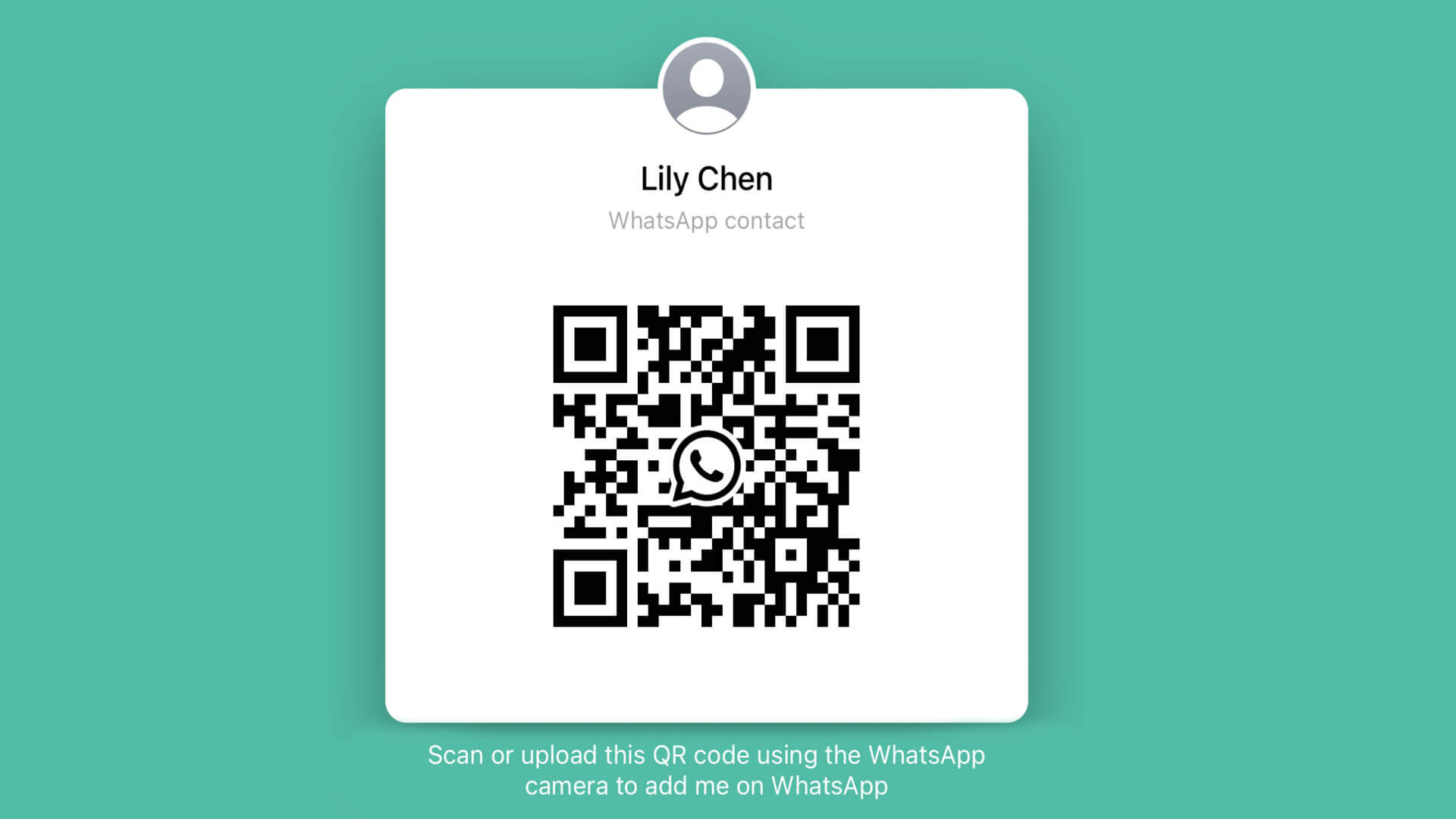
Confucian Temple and Guozijian Museum
- Chinese name: 孔庙和国子监博物馆
- Chinese name: Kongmiao and Guozijian Museum
- Foreign name: Kongmiao Confucian Temple and Imperial College museum
- Area: over 49,000 square meters
- Category: History Museum
- Opening hours: May-October: 08:30-18:00; November-April: 08:30-17:00
- Location: No. 15 Guozijian Street, Dongcheng District, Beijing
- Add:北京市东城区国子监街15号
- Collection of fine works: carved stone of the thirteen classics, Qianlong stone drum, jade, bronze, etc.
- Museum level: China’s national second-level museum
- Scenic level: China’s national AAAA-level tourist attractions
- Virtual Tour: https://v.visitbeijing.com.cn/pano/A040/index.html

Confucian Temple and Guozijian Museum
Discover Beijing’s Confucius Temple and Imperial Academy: A Journey Through History
Step Into China’s Scholarly Past
Located in the heart of Beijing, the Confucius Temple and Imperial Academy (Guozijian) offer a glimpse into China’s rich educational and philosophical heritage. Built in the Yuan Dynasty (1302), the Confucius Temple is the second-largest Confucian temple in China, dedicated to the great philosopher Confucius, whose teachings shaped Chinese civilization. Just next door, the Imperial Academy, established in 1306, served as the highest educational institution for ancient Chinese scholars, where imperial exams determined the future of elites.
Marvel at Ancient Architecture and Cultural Treasures
Strolling through this historic site, visitors can admire traditional Chinese architecture, featuring grand halls, intricate carvings, and centuries-old cypress trees. The Dacheng Hall, the temple’s main structure, houses a grand statue of Confucius and is surrounded by 198 stone steles engraved with the names of over 51,000 scholars who passed imperial exams. In the Imperial Academy, the Biyong Hall, once used for lectures given by the emperor himself, stands as a testament to China’s deep reverence for education.
A Unique Cultural Experience
Beyond its historical significance, the Confucius Temple and Imperial Academy offer interactive experiences, such as calligraphy demonstrations, traditional Confucian rituals, and guided tours that bring China’s scholarly traditions to life. Visitors can even witness ceremonies that honor Confucius, providing an immersive look into China’s intellectual and spiritual legacy.
Why Visit?
For travelers seeking a deeper understanding of Chinese philosophy, education, and tradition, this site is a must-visit. Whether you are a history enthusiast, a cultural explorer, or simply a curious traveler, the Confucius Temple and Imperial Academy provide a peaceful and thought-provoking escape from Beijing’s bustling city life.
Come and walk in the footsteps of ancient scholars—let the wisdom of Confucius inspire your journey!
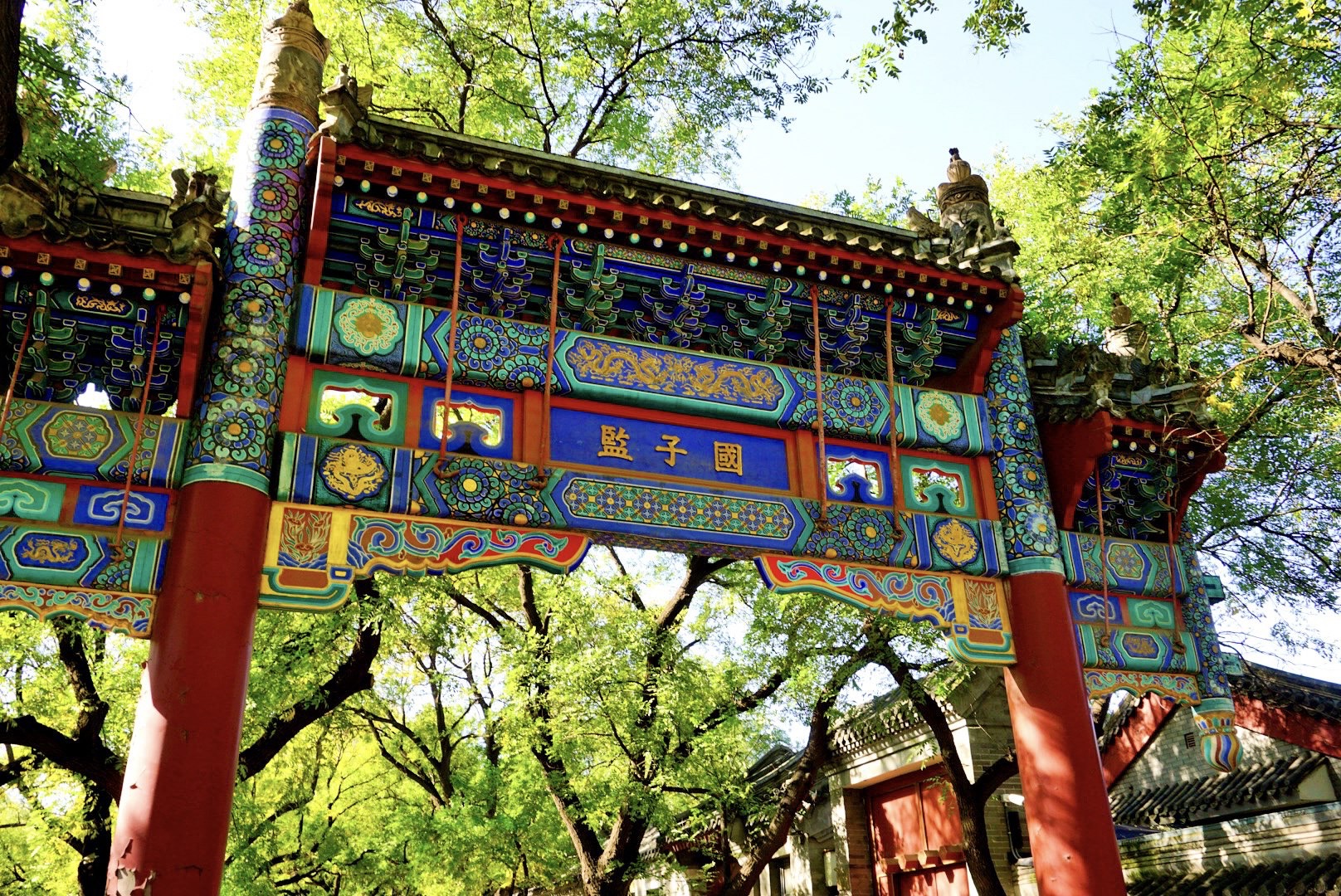
Confucian Temple and Imperial College museum Tourist Map



Confucian Temple and Imperial College museum Photo
Confucian Temple and Imperial College museum Video
Confucian Temple and Imperial College museum Travel Guide
Tour Route:
- Xianshi Gate (先师门): The plaque hanging on Xianshi Gate bears an inscription written by Emperor Qianlong.
- Jinshi Inscription Steles (进士题名碑): A total of 198 steles serve as the most authentic historical testimony of China’s imperial examination system.
- Dacheng Gate (大成门): The second main gate of the Confucius Temple, featuring a statue of Confucius in front. On either side outside the gate stand ten stone drums known as the “Qianlong Stone Drums.”
- Imperial Stele Pavilions (御碑亭): Built during the Qing Dynasty, these 11 pavilions mainly record the significant achievements of Emperors Kangxi, Yongzheng, and Qianlong in unifying China, as well as accounts of temple restorations, imperial lectures, and Confucius worship ceremonies.
- Inkstone Water Lake (砚水湖): An ancient well from the Ming Dynasty, shaped like an inkstone. Emperor Qianlong named it “Inkstone Water Lake.” It was once known for its shallow yet sweet water. According to legend, scholars who drank from this well and used its water for grinding ink would be inspired with brilliant literary ideas and ultimately achieve success in imperial examinations.
- Touch-Traitor Cypress (触奸柏): Believed to have been planted by Xu Heng, the National Academy’s rector in the Yuan Dynasty, over 700 years ago. During the Ming Dynasty, corrupt official Yan Song presided over a Confucius worship ceremony on behalf of the emperor. As he passed beneath this tree, a sudden gust of wind shook its branches, knocking off his official hat. People later believed this tree could distinguish between loyalty and treachery, thus calling it the “Touch-Traitor Cypress” or “Discerning-Traitor Cypress.”
- Dacheng Hall (大成殿): The main hall of the Confucius Temple, where a sacred tablet of Confucius is enshrined at the center. It served as the venue for imperial rituals honoring Confucius.
- Chongsheng Shrine (崇圣祠): Temporarily closed. At its entrance stands a stone statue of Confucius, sculpted in a 1:1 scale based on historical descriptions.
- Thirteen Classics Carved in Stone (十三经刻石): The most complete official Confucian stone inscriptions still preserved in China today.
- Taixue Gate (太学门): The second gate of the Imperial Academy. “Taixue” refers to the highest educational institution of the state, a title used until the late Qing Dynasty.
- Glazed Archway (琉璃牌坊): The only archway in China built specifically for education. Below it lies a carved stone “Ao Head”; touching it is believed to bring success in imperial examinations.
- Biyong Hall (辟雍): The only palace exclusively dedicated to lectures given by Qing emperors.
- Doctorate Hall (博士厅): The administrative department responsible for academic affairs.
- Yilun Hall (彝伦堂): The venue for major events at the Imperial Academy, and the largest hall-style building within the institution.
- Shengqian Hall (绳愆厅): An important administrative department of the Imperial Academy, equivalent to a modern school’s discipline office.
- Jixian Gate (集贤门): The main gate of the Imperial Academy, symbolizing the institution’s role in gathering and cultivating talented individuals.
How To Get To Beijing Confucius Temple and The Imperial College Museum
By Taxi
from downdown to Confucian Temple and Imperial College museum, expense is about 50-100 rmb
Practical Chinese:for taxi driver pls take us to BeiJing Confucian Temple and Imperial College museum 请载我们到孔庙和国子监博物馆


